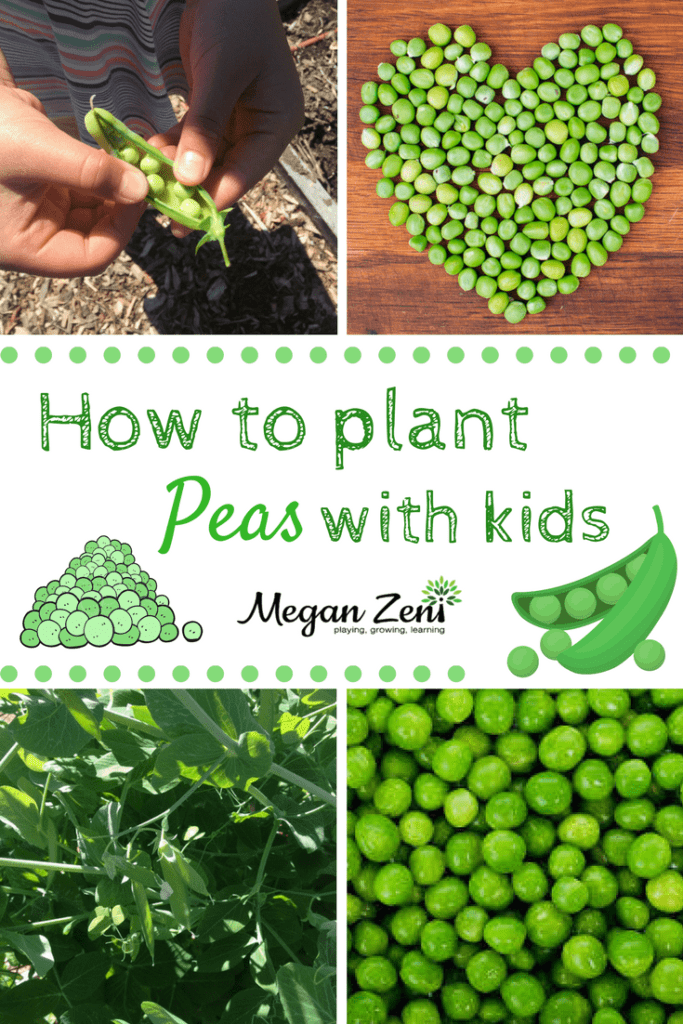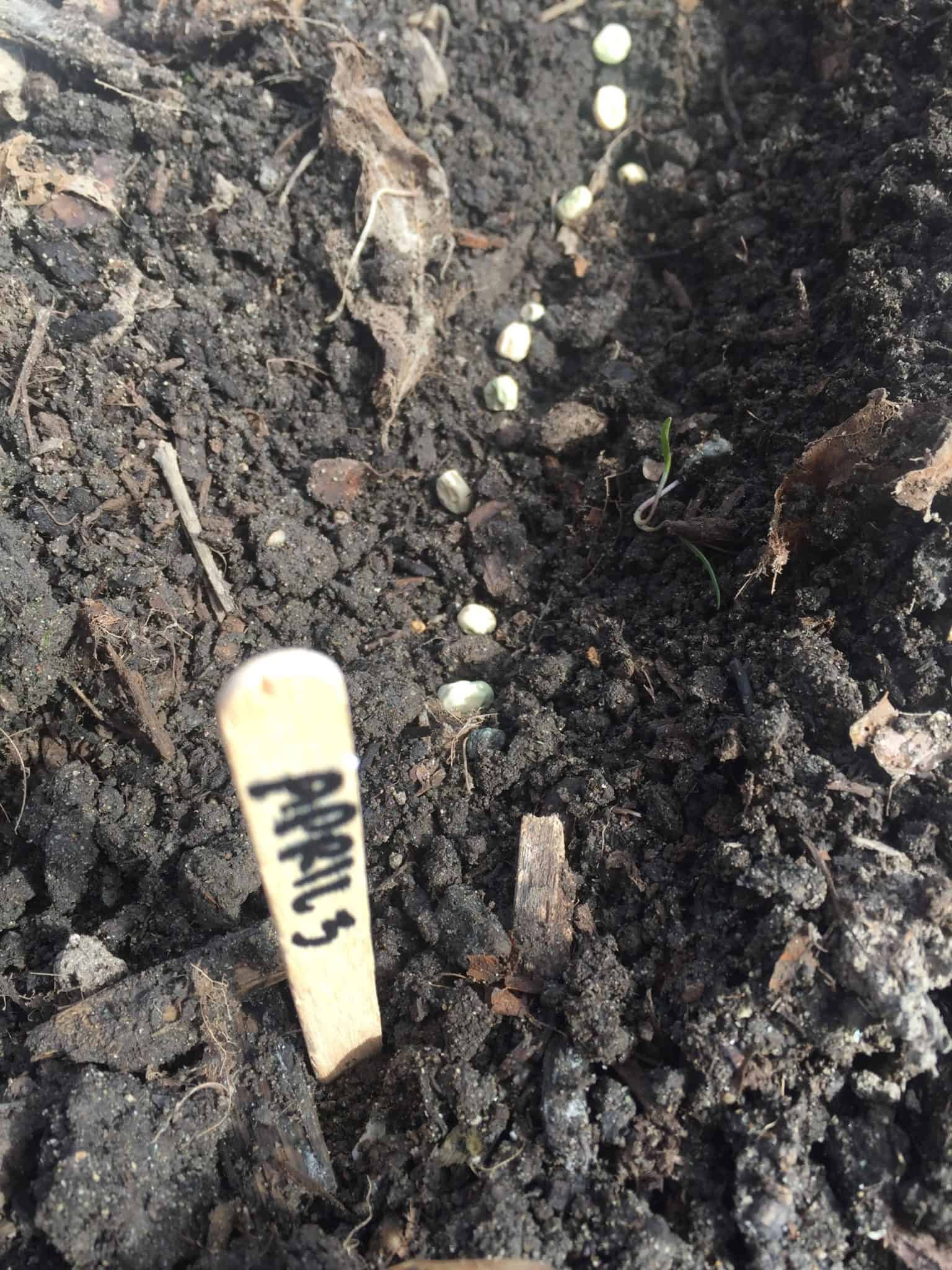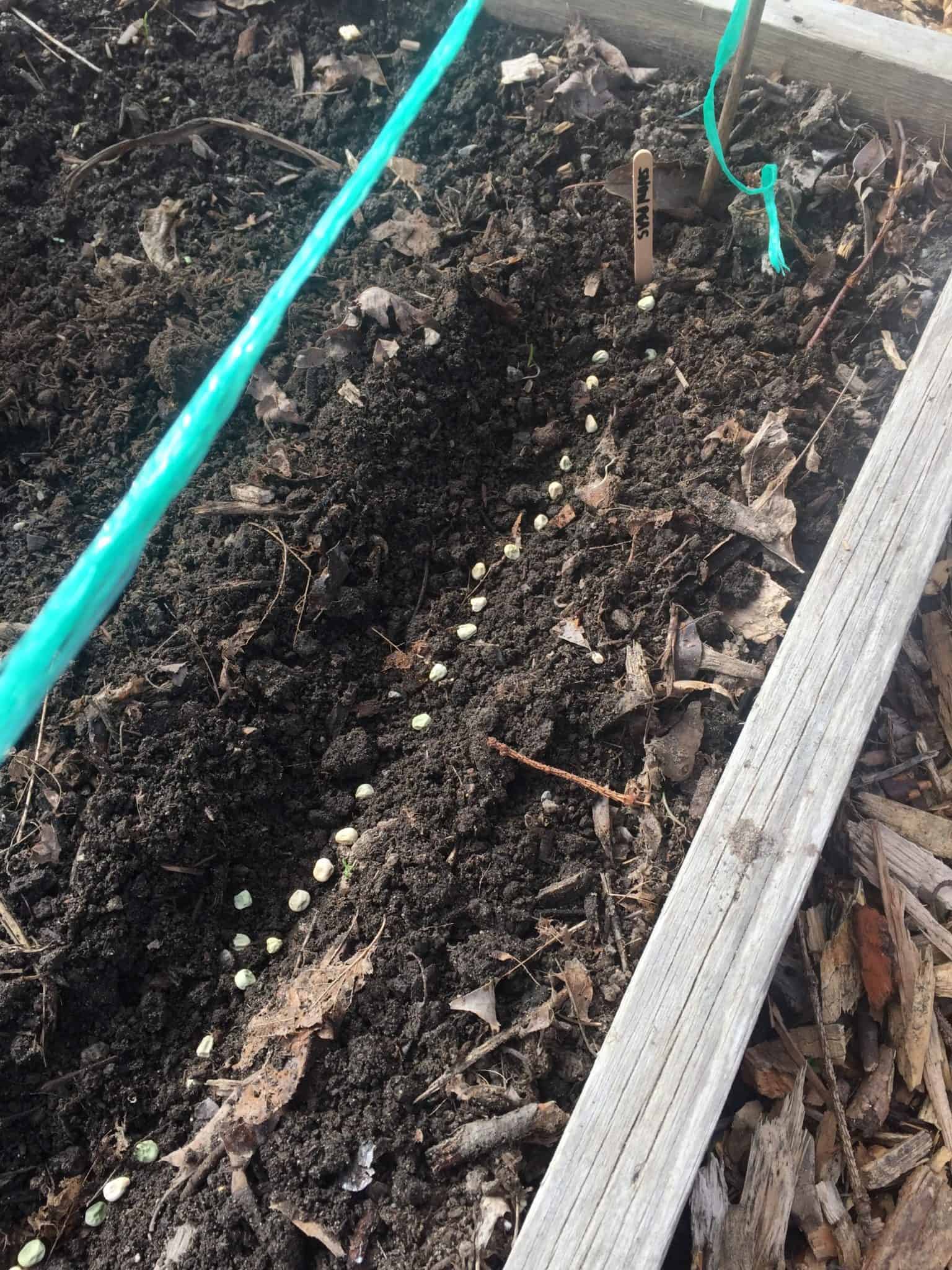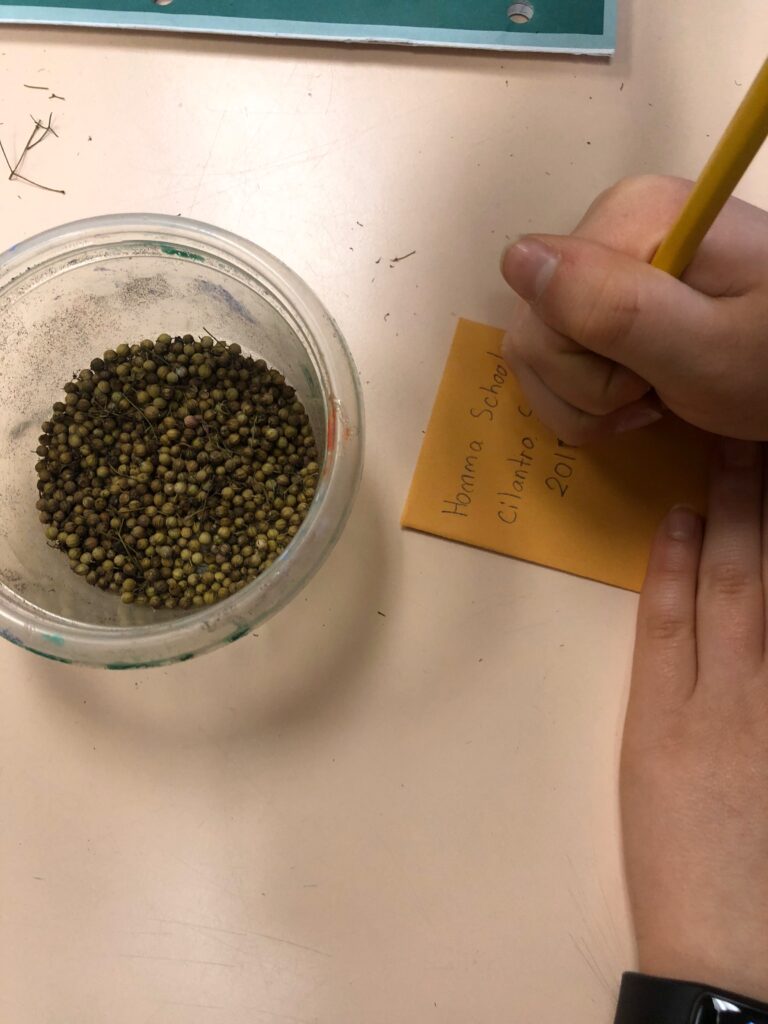- filed under: Recommended Crops, Seasonal Outdoor Learning
How To Plant Peas With Kids

Gardening with kids opens up a wide opportunity to try new veggies and to grow your own favourites. Peas are an easy and reliable crop to start with, when growing a garden with kids. Peas picked right from the garden are incredibly sweet and with many varieties available to plant as early as February, a constant source of garden snacking through the growing season.
This post is intended as a helpful step-by-step guide on how to grow peas with kids in school or backyard gardens, my advice is tailored to growing peas specifically with children, or in a school garden context. Some advice might might be different than conventional gardening advice for that reason.
Planting Pea Seeds
The challenge with pea seeds is to give them an early enough start, without dooming them to rot in the wet cold soil.
Check the seed package for instructions, but most can be planted out as soon as the soil is defrosted and not soaking wet. (If you don’t have a soil thermometer, you can buy one here.) Many gardeners like to start their peas indoors and transplant them out once the soil warms up a bit. I’ve never had much success with this, as the transplants are fragile and little hands are rough on these baby plants.
I typically just wait until the threat of frost has passed and then go plant them right out into the garden when working with children. Peas can be planted quite closely together, which is a relief when planting with little fingers. They don’t need to be thinned as they grow, but it is a good idea to secure some sort of trellis or structure you can train them to grow on before you plant the seeds.
It’s a big chore to try and get these vertical supports into the growing area without damaging the seedlings later. Plan ahead, and get the trellis installed before you plant, or find a south facing latticed fence to plant the seeds along the soil next to.
Choosing Pea Seeds
Choosing which variety of peas to plant is fun too! We source all our seeds from WestCoast seeds which has reliably excellent germination rates and high resiliency to disease. In terms of crunch and taste, you have some options! Snap peas can be eaten with the pod intact, shelling peas grow big tasty peas and Snow peas are my third choice of peas to grow with children.
These three varieties are the most disease resistant, and least likely to end up with the dreaded enation mosaic virus (EMV) or powdery mildew. If you haven’t planted your peas yet, be sure to read the package and choose a variety that is EMV resilient, particularly if you are planting seeds out in May or June.
RELATED POST: How to grow rhubarb with kids
RELATED POST: How to grow carrots with kids
RELATED POST: How to grow Broad Beans with Kids
How To Plant Peas With Kids
The first step is to prepare the planting bed. Peas grow best in well drained soil. Be sure the soil is loose, has lots of organic matter, and is kept moist.
In terms of what can be planted near peas, they are good companions with beans, carrots, celery, corn, cucumber, eggplant, parsley, peppers. potatoes, radish, spinach, strawberries and turnips. WestCoast Seeds advises avoiding planting peas near onions.
Peas are notoriously good for returning a nutrient called nitrogen back into your soil, both while they are growing and after they are composted back into the earth. This means you should just turn the plants over in the fall back into the soil and not pull them out. (unless your plant is infected with the EMV virus, in which case you should remove and destroy the plant)
Your soil will be better for the added organic material, and the next plants grown there will appreciate the available nitrogen the peas left behind. Peas are considered soil builders, so be sure to plan for peas every year!



RELATED POST: How to plant garlic with kids
RELATED POST: How to plant pumpkins with kids
RELATED POST: How to plant kale with kids
Strategic Planting for School Gardens
Peas typically take 70 days to mature. A great math activity is to have your students look at the last weeks of school to determine when the peas must be planted by to harvest before the summer break. Likewise, by looking at the dates school returns in the fall, you can work backwards to plan for seeding in the last weeks of June!
How to Harvest Peas with Kids
When harvesting peas, pick them while the pod is still a uniform green.
As the colour of the pod lightens, the quality of the pea flavour diminishes. Once they begin to ripen, the whole bunch will be ready in short order. To avoid a glut of peas that all ripen in one week, plant out seeds every other week from early March until the end of June. If you leave peas too long on the vine, you can still use the peas! Peas are an easy crop to seed save. Simply wait until the vine has dried up and the seeds can heard when the pod is shaken. “Rattle dry” pea pods are ready to be brought indoors and and laid out in a well ventilated space.
Once they are completely dry, remove the seeds. Pea seeds are viable for about 3 years when stored in a cool, dry space. I use paper coin envelopes to keep our seeds safe and dry. I have the kids label the envelope with the name of the seed, number of seeds, and then illustrate the contents.
You can sell these envelopes at your school as a fundraiser or donate them to community members at a Seedy Saturday near you!

Want to know more about school gardening? Be sure to sign up for my newsletter. Scroll back up to the top right of this page, enter your details and I promise to send only awesome links to blog posts like this once a month.
If you are on Pinterest, come follow my gardening with kids board for great ideas from amazing school gardeners around the world!
References: The Oregon Master Gardener Handbook. Sustainable Gardening. 2013.
